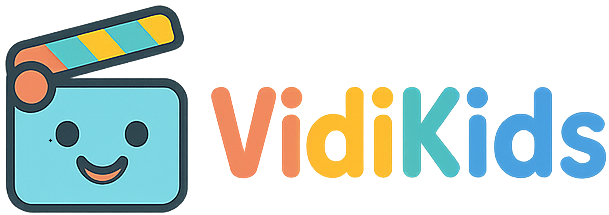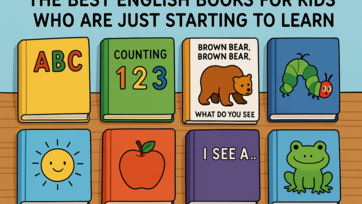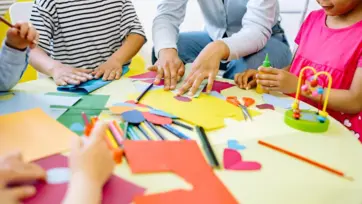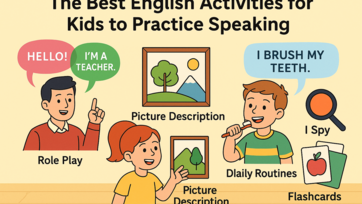We live in a world where children’s time is often filled with activities, screens, or structured schedules. But what if boredom wasn’t a problem to fix, but an opportunity to grow?
Boredom is often misunderstood. For children, those empty moments when there's "nothing to do" can become the most important times of the day—times when creativity is born, resilience is tested, and independence begins to form.
Let’s explore why boredom is essential for a child’s development and how you can help your child benefit from it.

The Hidden Benefits of Boredom
It encourages creativity
When children are left to their own devices—without devices—they often surprise us. A stick becomes a sword, a blanket becomes a tent, a few chairs become a castle. Boredom nudges them into imagination. Research has shown that unstructured time allows the brain to wander, which can lead to creative breakthroughs.
It builds problem-solving skills
Without someone or something constantly providing stimulation, children begin asking questions. “What can I do now?” That question is the beginning of problem-solving. They start to create solutions, invent games, or revisit old toys in new ways. This mental stretching strengthens cognitive flexibility and decision-making.
It teaches patience and self-regulation
Waiting is not easy for anyone, especially children. But boredom gives them the chance to sit with discomfort and learn that they can manage it. This strengthens emotional resilience—a critical skill for coping with future challenges in school, relationships, and life.
It boosts independence
Many parents feel pressure to constantly entertain their children. But stepping back shows children that they are capable of entertaining themselves. This shift builds self-confidence. The child learns, “I don’t need someone else to tell me what to do—I can figure it out.”
It leads to deeper thinking
Boredom allows space for reflection. In these quiet moments, children may revisit memories, imagine the future, or process their feelings. This is important for emotional development and mental clarity.
How to Support Boredom in a Healthy Way
It may feel uncomfortable at first to let your child be bored, especially if they start to complain. But with the right environment, boredom can turn into a powerful part of their day.
Don’t rush to fill the silence
When your child says, “I’m bored,” try not to offer immediate solutions. Instead, acknowledge their feeling. “It’s okay to feel bored sometimes. I know you’ll find something interesting to do.” This response communicates trust in their ability to figure it out.
Provide open-ended materials
Set out items like cardboard, paper, crayons, tape, fabric scraps, or nature items. These are materials that don’t have a single use—they invite creativity. A cardboard box might become a spaceship, or a stack of leaves might become a forest mural. Let your child explore.
Set boredom time on purpose
Consider creating a daily window when screens are off and nothing is scheduled. Even 20–30 minutes of unstructured time can work wonders. Some families call it “quiet play time” or “creative hour.” The label doesn’t matter—the freedom does.
Gently offer prompts if needed
If your child really seems stuck, offer open-ended prompts, not directions. “What could you build with those blocks?” or “What story could you tell with your stuffed animals?” Let them take it from there.
Celebrate the results
Did your child spend 20 minutes building a shoebox zoo? Drawing a made-up planet? Playing quietly with figurines? Recognize their creativity and independence. Comments like “That looks so interesting” or “I love how you thought of that idea on your own” reinforce the behavior.
Sample Routine for Encouraging Boredom
Here’s a simple schedule you can adapt to your child’s needs:
3:00–3:15 p.m. – Quiet boredom window (no screens or adult-led activities)
3:15–3:45 p.m. – Free play using craft or recycled materials
3:45–4:00 p.m. – Reflection: child shares what they did or made
This short block each day creates a habit of self-direction and creativity—without pressure or performance.
What If They Get Frustrated?
It’s natural. Some children may whine or seem restless at first. This is part of the adjustment. Boredom tolerance is like a muscle—it grows stronger with gentle, consistent practice.
Avoid giving in too quickly. Stay calm, show empathy, and encourage them to trust their imagination. Over time, they’ll begin to look forward to the freedom of this unscripted time.
What the Research Says
Psychologists and educators have noted that boredom can play a key role in emotional regulation and creativity. According to several studies, children who experience regular unstructured time are more likely to develop better problem-solving abilities and emotional balance.
Experts from parenting and education fields also suggest that embracing boredom can lead to greater self-esteem and intrinsic motivation, particularly when children are allowed to explore their interests without a defined end goal.
Final Thoughts
Boredom isn’t something to fear—it’s something to welcome.
In a world full of constant stimulation and quick fixes, giving children space to be bored might be one of the best gifts you can offer. It invites them to think, to wonder, to create, and to trust their inner resources. It teaches them that they can shape their own experiences—and that some of the best adventures begin when there’s nothing planned at all.
Let boredom live in your home for a little while. You might be amazed at what your child builds from it.
; ?>







